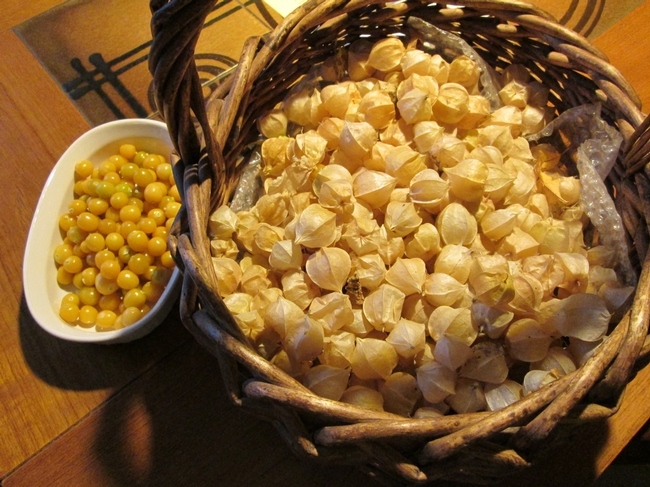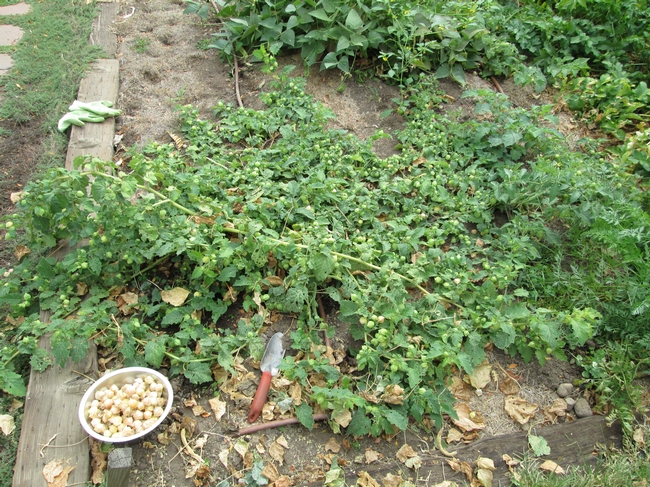Reading books about pioneer families I noticed that ground cherry pie often played an important role in fall festivities. Priding myself as a "fruitarian" I was surprised that here was a fruit I had never seen or tasted. That had to be rectified!
Ground cherries belong to the genus Physalis and are closely related to Cape gooseberries (Physalis peruviana) and tomatillos (Physalis ixocarpa) which they resemble. Many Physalis species are described as ground cherries, but I chose to grow one particular variety — Physalis pubescens var 'Pineapple' — since it was said to have a superior flavor. Two other highly recommended varieties are “Aunt Mollie” and “Goldie” which are said to have good flavor and are a little larger than “Pineapple”.
I sowed the seeds indoors six weeks before the last expected frost and had no trouble germinating or transplanting them. The plants grew slowly at first but more rapidly once soil temperatures had warmed up. At this point the foliage became laced with tiny holes which looked consistent with flea beetle damage. I used some insecticidal soap with little affect before deciding to let them take their chance without any further intervention. The plants quickly developed into a lax, multi-branched, 18-inch high, sprawling shrub with many of the stems running along the ground. Numerous tiny yellow flowers developed into husk covered fruits. None of them approached the promised ½-inch diameter but were more like the size of a large green pea. Toward the end of the season the husks turned brown and the fruits inside became bright yellow/orange before dropping to the ground. Harvesting was accomplished by raking up the fallen fruits.
Unlike tomatillos, the bottom of the fruit does not protrude through the husk, so there is no way of telling if the fruit is ripe until the husk has been removed. Green fruits should not be eaten since they contain a toxic alkaloid. There are numerous very tiny seeds inside the fruit, and occasionally this can give the impression of eating grit! The flavor is hard to describe, but ripe fruits are sweet, pleasant to eat out of hand and add interest to fruit salads, but they really come into their own for making preserves since they produce a wonderful, unique-flavored jelly or jam. One great advantage of ground cherries is that they have a tremendous shelf life, and can hold for up to 3 months if left in their husks and stored in a cool place.
It was four years ago that I planted my first crop and although I was not smitten by this fruit and had no intention of growing it again, it has volunteered in my garden ever since, so I usually leave a couple of plants to mature and welcome the change of flavor from the eternal grapes and pears!
You can find ground cherry seeds in many gardening catalogues.

